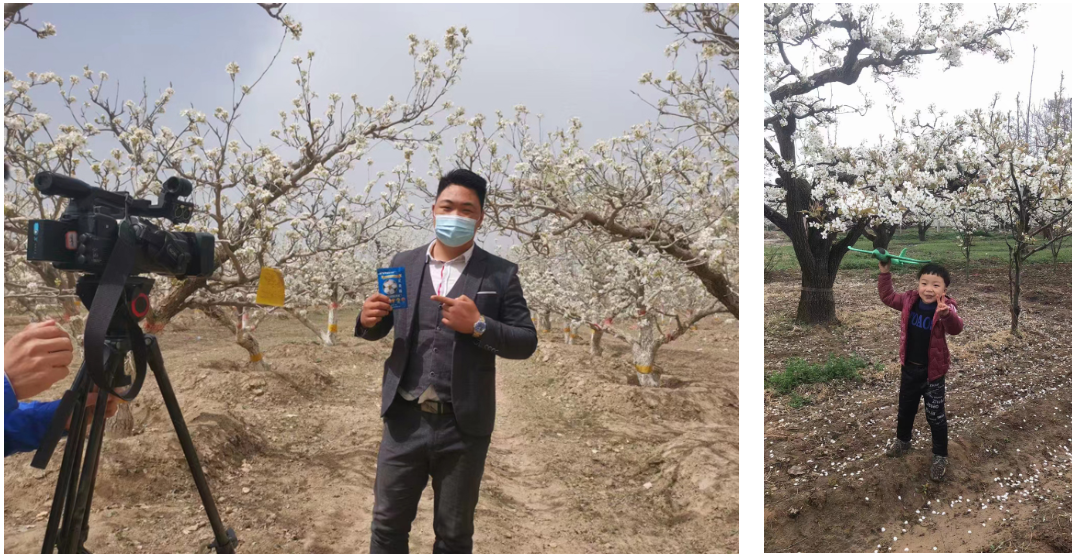נוב . 07, 2024 19:21 Back to list
Pear Pollen Germination Rates in Wholesale Markets for Optimal Cultivation Practices
Understanding Wholesale Pear Pollen Germination A Key to Successful Pear Cultivation
Pollen germination is a vital process in the reproductive cycle of flowering plants, particularly in the context of fruit trees like pears (Pyrus spp.). For growers focusing on commercial pear production, understanding the intricacies of wholesale pear pollen germination can be the difference between a thriving orchard and one that yields subpar fruits. This article delves into the significance of pollen germination in pear cultivation, the factors influencing it, and how to optimize this process for better harvests.
The Importance of Pollen Germination
Pollen germination marks the beginning of fertilization in flowering plants. When pollen grains, which are the male gametes, land on the stigma of a flower, they must germinate and grow a pollen tube that reaches the ovule for fertilization to occur. In pear trees, successful pollen germination leads to the development of fruit. The quality and quantity of the fruit produced largely depend on how effectively the pollen germinates and fertilizes the ovules.
For wholesalers and commercial growers, ensuring effective pollen germination is crucial. Poor pollen germination can result in incomplete fertilization, leading to a lower yield of fruit and variable fruit quality—factors that can significantly affect marketability and profit margins.
Factors Influencing Pollen Germination
1. Environmental Conditions Temperature and humidity play a crucial role in pollen viability and germination. Ideal conditions for pollen germination vary among pear species, but generally, moderate temperatures—typically between 15°C to 24°C (59°F to 75°F)—and sufficient moisture levels foster better germination rates.
2. Genetic Factors Different species and cultivars of pears exhibit varying levels of pollen viability. Some cultivars may produce high-quality pollen that germinates readily, while others may yield pollen that is less viable. Understanding the genetic traits of specific pear varieties can guide growers in selecting the best pollen sources for their orchards.
3. Pollinator Activity Bees and other pollinators significantly affect pollen transfer from male to female flowers. The presence and activity level of these pollinators on the farm can enhance the likelihood of successful pollen germination. Promoting a healthy ecosystem around the orchard can attract more pollinators, thus increasing the chance of successful fertilization.
wholesale pear pollen germination

4. Pollen Compatibility Pollen compatibility between different pear varieties is crucial. Cross-pollination can lead to better fruit set and quality. However, incompatibility may hinder fertilization, thereby affecting pollen germination rates. Growers should carefully select compatible varieties to plant in proximity to ensure successful pollination.
Best Practices for Optimizing Pollen Germination
1. Selection of Pollinators Choose compatible pear varieties that bloom simultaneously to ensure optimal pollen transfer and germination. This strategic planting encourages cross-pollination, which enhances fruit set.
2. Pollinator Habitat Creation Introduce habitats that attract pollinators by planting flowers and plants that bloom alongside pear trees. This tactic supports bee populations and improves pollination efficiency.
3. Monitoring Environmental Conditions Use weather stations or digital tools to monitor temperature and humidity in orchards. This data allows growers to make necessary adjustments, such as irrigation and shading, to optimize conditions for pollen germination.
4. Regular Soil Testing Healthy, nutrient-rich soil enhances the overall vigor of pear trees, ultimately leading to better flower production and, subsequently, improved pollen viability and germination. Regular soil testing can inform fertilization practices that support tree health.
Conclusion
Wholesale pear pollen germination is an essential aspect of successful pear cultivation. By understanding the factors that influence germination and implementing best practices, growers can improve their harvests and ensure high-quality fruit production. In an industry where quality and yield directly correlate to profitability, optimizing pollen germination is a worthwhile investment. As research and technology advance, the potential for enhancing this process will continue to grow, paving the way for more sustainable and productive pear orchards.
-
Premium Cottonwood Pollen for Sale High-Quality Cottonwood Tree & Apricot Flower Pollen Suppliers
NewsJun.24,2025
-
Artificial Pollination Solutions for Pear Trees Auxiliary Pollination Services & Pricelist
NewsJun.10,2025
-
Bagging Paper Bag for Fruit - Wholesale Suppliers & Manufacturers for Fruit Factories
NewsJun.10,2025
-
Premium Apple Birch Tree Pollen Suppliers Quality Exporters
NewsJun.09,2025
-
Lorado Pollen Suppliers Pure Apricot Flower Pollen Collection
NewsJun.09,2025
-
Premium Mulberry Pollen Natural Source for Bee Health & Nutrition
NewsJun.09,2025